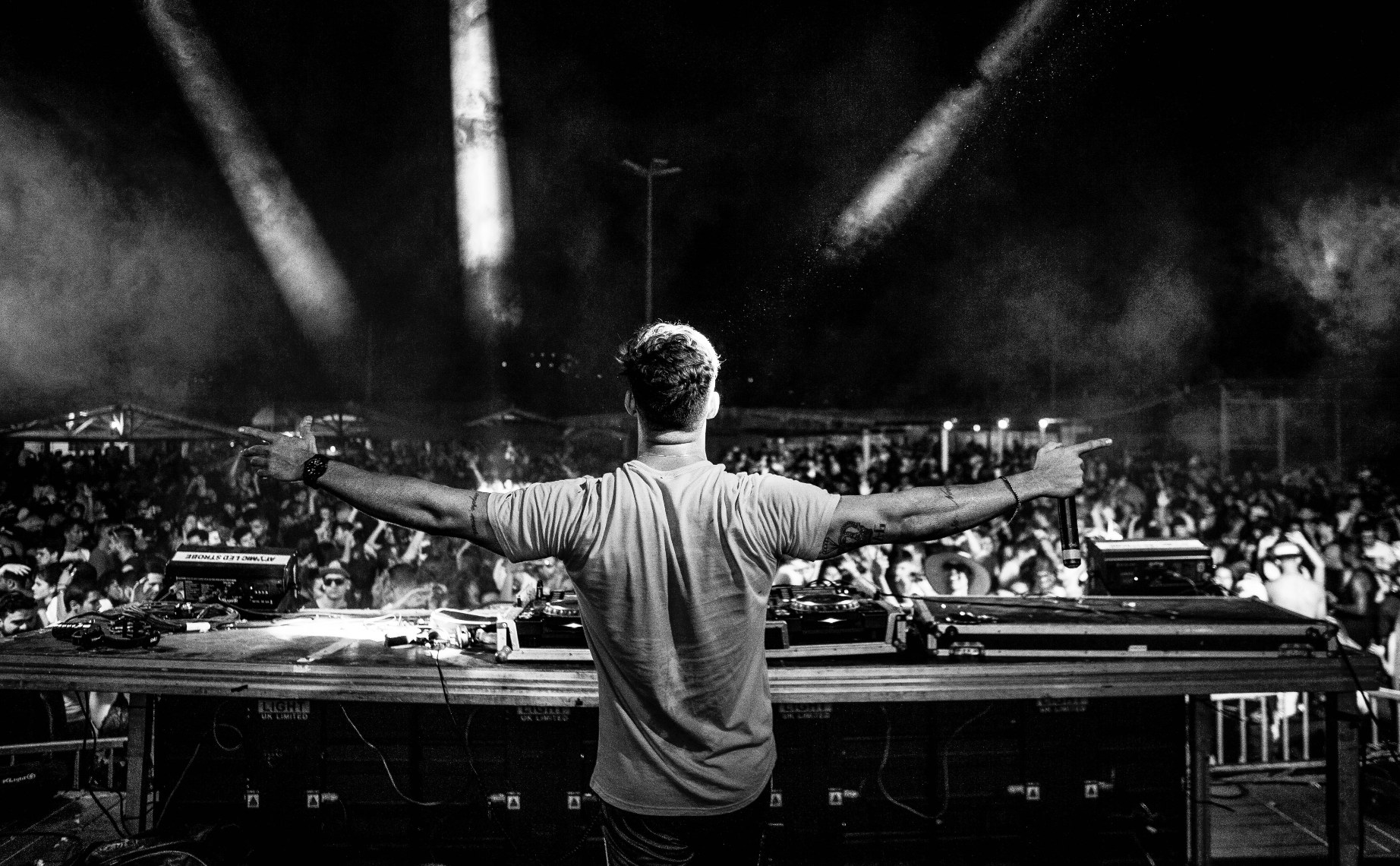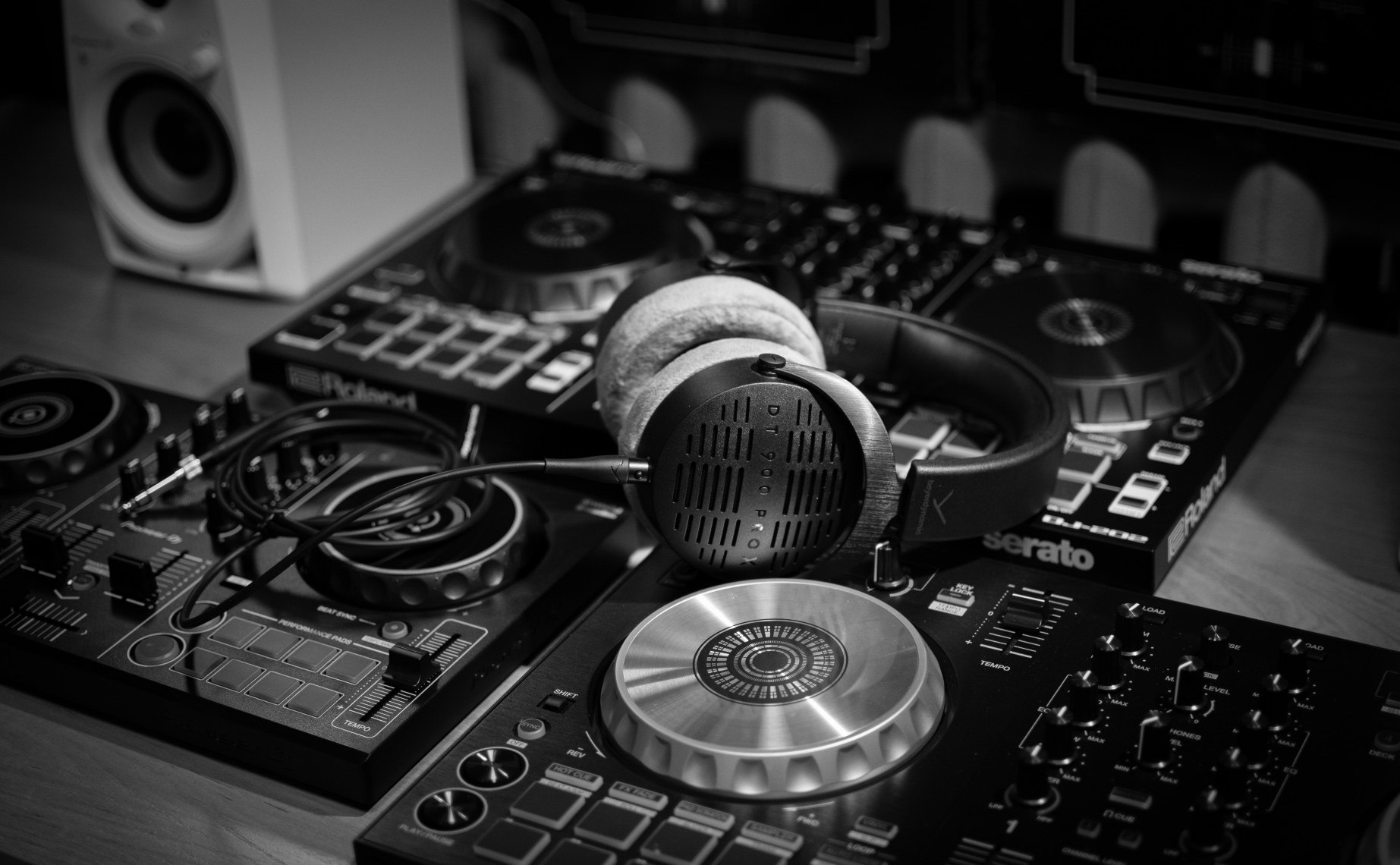
■ Features
Before learning how to DJ, you might be interested in looking a little more closely at what DJing is and where it came from. This is why we’ve put together a brief history of DJing.
Thanks to recent advancements in technology, you don’t even need a pair of decks to DJ anymore - you can learn how to DJ on a laptop before progressing onto learning how to beatmatch on CDJs which are today’s industry-standard DJ equipment. You can play in the world’s best club without ever having to learn how to mix vinyl.
But how did we get here? And what are the earliest origins of the DJ profession? Who were the first turntablists and early producers who helped set the stage for DJs as we know them today? What were the absolute first DJ mixes and whose were they? What were they like and how did they sound?
The term 'DJing' means someone is mixing records or digital audio files, using DJ equipment like turntables, CDJs, controllers or DJ software.
DJs have been around for almost 4 decades now. Whilst it's not known who invented DJing, or who the first DJ to mix two records was exactly, we do have a good idea of who came up with the term for the practice.
Many people say the term 'DJ' was coined by Kool Herc, an early Hip Hop DJ in the 1970s, who wanted to distinguish himself from musicians that played instruments. However, the term actually originated with radio personality Jerry Bledsoe in 1961. He described a practice as being like someone 'deejaying' between records.
For the past four decades, turntables have been the heart and soul of the DJing world. It all started with two turntables and a mixer in the early '70s.
The first DJ mixer was invented by a company called RCA in 1963. This enabled people to crossfade between two different records. However, there were similar tools used by other DJs before that so the question of the ‘first DJ mixer’ is a contentious one. This first mixer had two inputs and two outputs and allowed DJs to fade between two tracks while they played simultaneously.
Turntables gained popularity in the late '70s when mixing became commonplace. With the introduction of turntables that could be controlled by sound engineers with faders and pitch controls, DJs had more options than ever before when it came to creating new music from existing tracks.
The first DJ controller was invented in 1992 by mixer/producer DJ Pierre, who released the P2J Box, allowing DJs to manipulate digital audio files instead of vinyl records. Controller manufacturers have continued to produce more advanced controllers ever since.
In the early 1990s, CD-ROM technology was becoming mainstream, and many people were using CD-ROM drives to play music on their computers. But there was no simple way for a DJ to beatmatch one track to another, which is a crucial part of DJing.
This prompted a few companies to begin making hardware that would allow DJs to easily beatmatch CDs on a computer. Among these companies were Stanton Magnetics and Mixman Technologies.
Stanton Magnetics released a MIDI controller called FinalScratch in 2001, which they developed with software developer Native Instruments. The controller featured two turntables and a mixer, but it wasn’t able to load its own music; instead, it had to be connected to a computer that ran the FinalScratch software. The software allowed DJs to load their own music onto the computer and use the hardware controller to manipulate it. Stanton Magnetics released several versions of FinalScratch throughout the 2000s before discontinuing the product in 2010.
Francis Grasso is the guy who discovered how to beatmatch, or how to play two records with the same tempo so they sound like they are one track when played together. This was in the early 1970s, when Grasso was working at a radio station in Long Island.
This technique became very popular and Grasso went on to work for Bob Marley, Grandmaster Flash, and LL Cool J before founding the company that still bears his name today.
The industry-standard DJing equipment of today is vastly different from what was used by DJs in the past.
The components that make up a quality DJ system have been evolving and improving for decades, what started out as simple, low-end solutions for DJs has now become high-end professional gear.
Nowadays, DJs have access to all kinds of equipment they would never have dreamed of having just 30 years ago. Gone are the days of lugging around crates and boxes full of music, or spending hours looking for the right CDs in order to play a specific set or mix.
Both DJ software and harware are still developing at an exciting rate. Just last year, Pioneer launched their latest CDJ model which will quickly overtake their last as the industry-standard DJing equipment.
While it’s important to keep up with changing technologies, it’s also important to stay in tune with the roots of the artform. For example, by learning how to scratch, you’ll gain an education in old-school Hip Hop, even if you are using the latest in DJ technology to do it.

In just a few short decades, the world has changed more than it has in the past hundred thousand years combined. Many people still don't even understand what DJing really is, and there are still many misconceptions about who actually invented the art and science of mixing records. Nevertheless, DJing as an artform remains fascinating both in its (sometimes blurry) past and in its dynamic future.
To learn more about the history of DJing, it’s worth reading up on the history of vinyl.
Feeling inspired? If you don’t have access to decks at home, you can book a DJ studio with Pirate and pay by the hour, across the UK, Germany and US. All of Pirate’s studios come equipped with the latest industry-standard decks to help get you club-ready.
